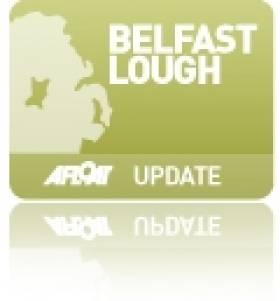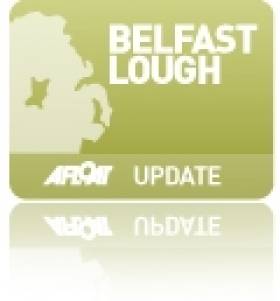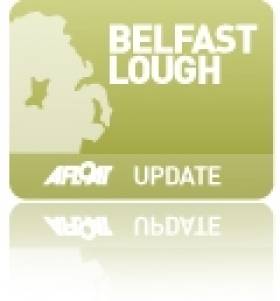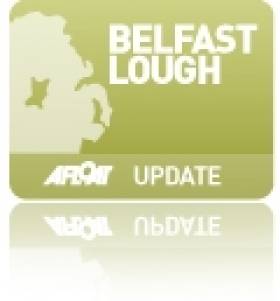Displaying items by tag: Giant Oil Rig
#GiantOilRig – A giant oil-rig the Blackford Dolphin, which was initially only supposed to be in Belfast for a six-week refurbishment, is to finally depart Belfast today after six months dominating the city's skyline.
As previously reported on Afloat.ie, the platform is one of the world's biggest such structures, the 260ft rig, that sailed into the harbour before Christmas, will be heading back to Norway at a snail's pace after her multi-million pound refit at Harland & Wolff, which employed some 400 workers on the project.
The contract price for the work is thought to be over £100m.
While the initial work schedule was only supposed to take 60 days, following the discovery of some structural defects on the rig when it came into the world's largest dock, the structure underwent months more repairs by welders, electricians, painters and engineers from the UK, Poland and Portugal.
For much more detail on this story, The Belfast Telegraph has a report HERE.
H&W Prepares to Say Farewell to Giant Oil Platform
#GiantOilRig- Work is now nearing completion at Harland & Wolff which has been carrying out specialised emergency work on one of the world's biggest oil platforms, the Irish News has confirmed.
Depending on the tides in Belfast lough, the 360-foot Blackford Dolphin oil drilling rig - which as previously reported on Afloat.ie, has been in dry dock on Queen's Island since before Christmas - will finally head for home in Norway.
The multi-million-dollar renovation project on the rig, a vast industrial behemoth which has dominated the titanic Quarter skyline for months, was meant to take just 60 days. For more on the story click here.
#GiantOilRig – A giant oil rig, initially set for a whistle-stop 60-day renovation project in Belfast, will now see the Blackford Dolphin remain in the city's docks until June.
As previously reported on Afloat.ie, the Blackford Dolphin, a 360ft high structure sailed into the Harland & Wolff shipyard in early December from Brazil for a refit.
In March, following the discovery of the need for additional "emergent" work, the rig's owners Dolphin Drilling told the Norwegian Stock Exchange that the work would continue until April.
However, that deadline has now been extended again for almost another two months – and the race is on to finish the work. For more on this story, the Belfast Telegraph reports.
Giant 'Dolphin' Oil Rig Not Leaving Ulster Just Yet
#OilRig – The Newsletter reports that the industrial behemoth that is an oil rig at Harland & Wolff, is set to remain as part of the skyline of Belfast for a number of weeks to come.
As previously reported on Afloat.ie, the enormous Blackford Dolphin drilling rig which made its way from Brazil last year, is currently in dry dock at Harland and Wolff as part of a re-fit project involving more than 1,000 workers.
The original contract to complete the work began last year and had run its course by around mid-February. However, she is still in the yard, and likely to stay put for at least another month. To know why, the Newsletter has more on this story.



























































